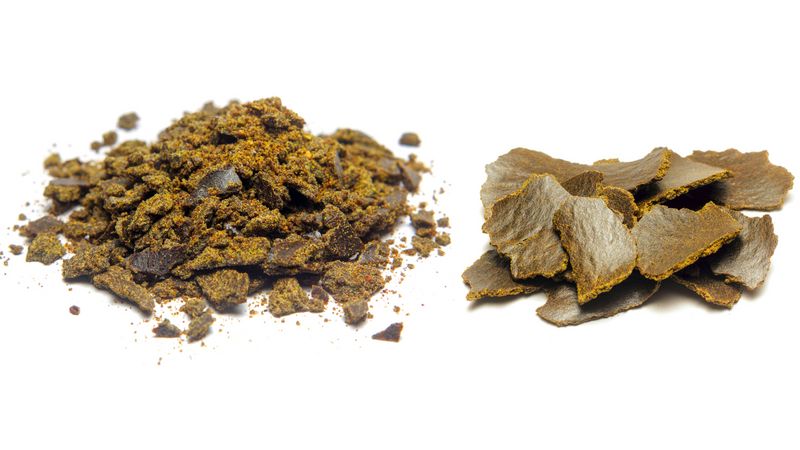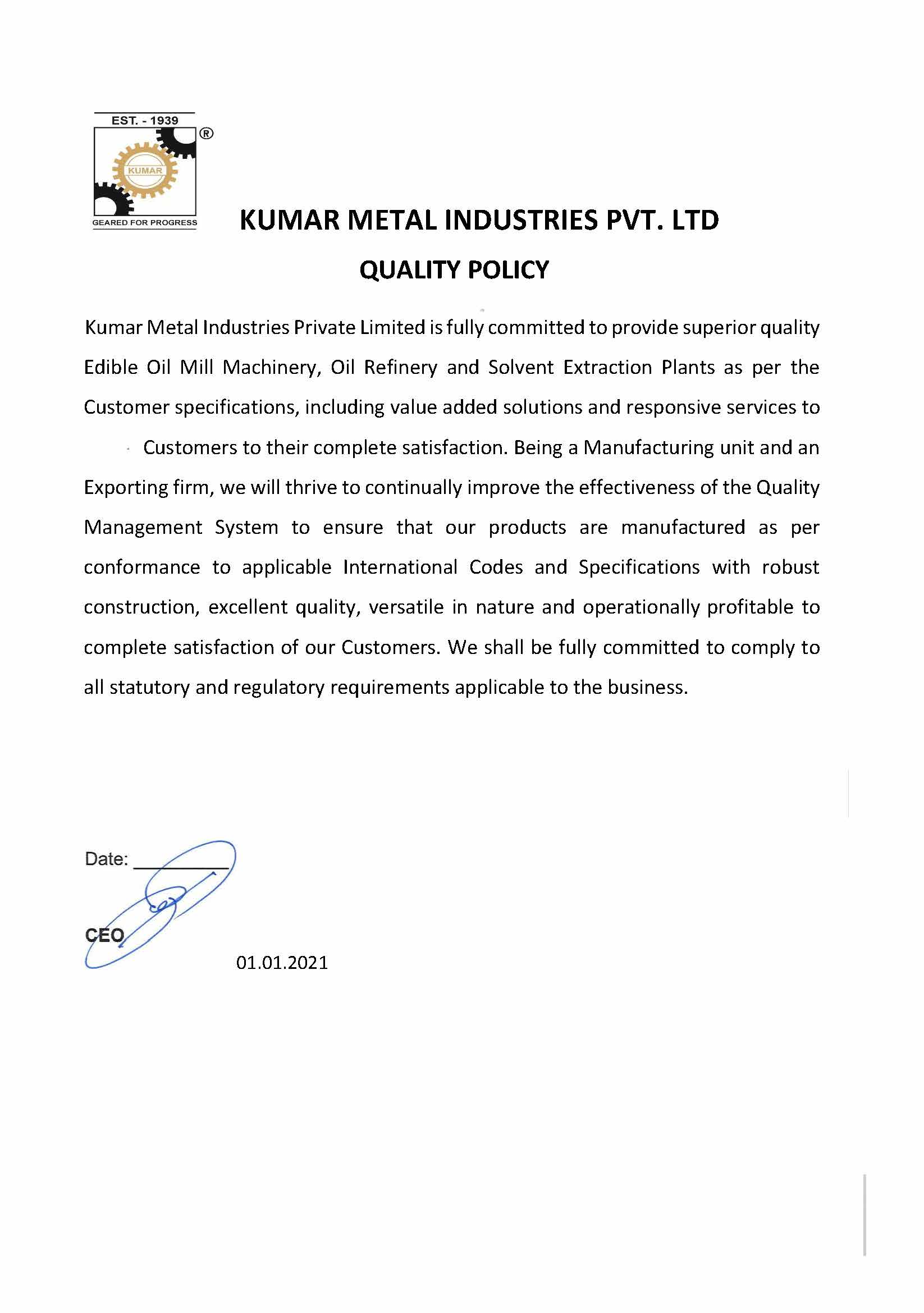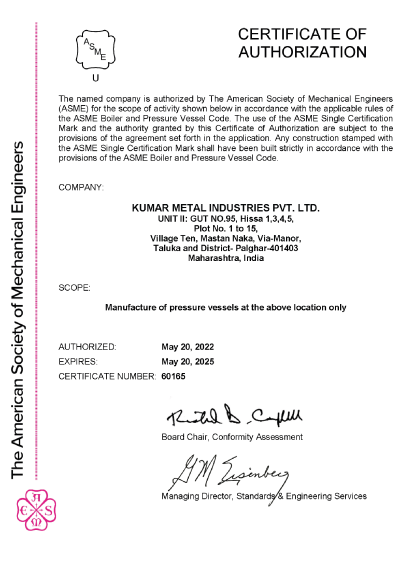
Expelling oil using a screw press recovers approximately 93-96% of the total oil content in oil-bearing seeds leaving up to 7-8% oil in the crushed seed remnants, known as cake or meal. Profit margins in the oils and fats industry are notoriously low, and manufacturers must seek methods to extract maximum yield from the cake before it is repurposed as animal feed. Here are some solutions.
Seed preparation: The key reason for high residual oil content in cake is improper seed preparation or pre-treatment results. Seeds need to be cleaned, cracked, dehulled, flaked and conditioned correctly to ensure a successful extraction. Cleaning removes dust, stones and other materials and increases press efficiency. Cracking, dehulling and flaking of the seeds increases the surface area and ruptures the cell wall. Cooking (steam conditioning) the flakes adjusts the moisture in the cake. Proper preparation makes the extraction process more efficient and reduces the residual oil content in the cake.

Kumar has a range of standalone and combination preparatory equipment, including seed cleaners, de-stoners, cracker rollers, hammer mills, flakers, seed pre-conditioners and cookers, extruders to optimise oil recovery and press efficiency for a variety of oil-bearing seeds.
Moisture content: Another reason for high residual oil in cake is the high moisture in the raw material during pressing.

Moisture content is an essential factor for efficient crushing, reducing moisture content increases the expeller's crushing ability, which in turn reduces the residual oil content in the cake. The recommended optimal moisture content in seed during pressing is 5%-12% which varies according to seed type.
Cooking the seed decreases oil viscosity and coagulates the protein in the meal, separating it from the oil. Kumar offers a range of pre-conditioners and multi-stage seed cookers with a fabricated shell and trays for indirect steam heating that can adjust the moisture content in the feed material.
Compression ratio: Compression ratio is the ratio of volume displaced per revolution at the feed end of the screw press to the volume displaced per revolution at the discharge end of the screw press. While it differs for each type of seed, compression ratio plays a vital role in screw pressing. An efficient compression ratio will reduce the oil content in the cake, while an improper compression ratio in the chamber can lead to high residual oil content in the cake.
Kumar's expeller range has a specially designed worm assembly to achieve the most optimum compression ratio for different seed types for high oil recovery during pressing and minimal residual oil content in the cake.
Worm Assembly and Reverse worm: It is critical to use the correct worm assembly for different seed meals along with the combination of reverse worm and collars. Proper usage will increase the pressure in the chamber and ensure optimal oil recovery and minimal residual oil content.

Several output challenges that Kumar has addressed on site have their genesis in worm assembly. By using proper worm assembly and changing the worm assembly and size, we have optimised capacity and oil content in cake per site conditions. Kumar offers specially design hard face worm assembly for different seeds where we use a combination of collars and reveres worm for full press and pre-press for optimal recovery of oil and seed capacity of expeller.
Fibrous material: Some seeds are very soft and deficient in fibre content for crushing, and as a result, the pressing is inefficient, and the residual oil content in the cake is high.

Deficient fibre content leads to low resistance during pressing as there is slippage in the cage and chamber. Worms cannot grip slippery meal and which exits the lining bars without being adequately pressed.
Kumar recommends adding 10-15% hulls or skin of decorticated sesame, sunflower seed, cottonseed or linseed in soft seeds for proper pressing.
Adding fibre to a meal while pressing increases the worms grip on the meal, making the pressing more efficient.
Gap between lining bars: If the gap between lining bars is high, the material will slip through, and the pressure exerted by worms on the material will reduce, resulting in high oil content in cake and high foots percentage in the oil from the expeller.
Similarly, if the gap is too small or there is no gap, the material can block the gap leaving no room for the oil to exit the cage bars. An optimum gap between lining cage bars ensures efficient pressing, fewer foots in oil and minimal residual oil content in cake.
Kumar's expellers use spacers to maintain an optimum gap in the lining bars. Our site support engineers provide maintenance and ensure it stays optimum depending on site conditions, feed capacity and seed.
Expeller feeding: Pressure is generated according to the volume of material fed to the expeller, and feeding must be done according to capacity to maintain this pressure. Less than optimal feeding will produce lower pressure which negatively impacts oil extraction and results in high oil residue in the cake.

Kumar recommends always feeding the expeller according to the capacity.
Worn out worms: Worms go through a lot of wear and tear over their lifetime due to constant pressure and movement of material in the chamber. As they wear out, space increases in the chamber, which results in reduced pressure and material flow and an increase in residual oil in the cake.

Kumar's expeller worms are hard-faced with special electrode welding to desired hardness, reducing wear and tear and increasing the lifespan of the worms.
You might find these interesting:
A simple guide to edible oil refining
Learn everything about batch refining of oils
Why it is imperative to innovate in the edible oils processing industry
For 82 years, Kumar has been delivering dependable process engineering solutions to the oils and fats industry. We're known for our robustly engineered, versatile and operationally profitable plant and machinery. It's why over 500 customers in 65 countries depend on us to solve their processing challenges, big or small. If you’d like to know more about our solutions please fill out the form below:
"*" indicates required fields



















